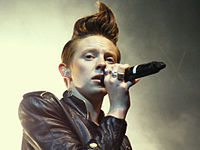
A hairstyle, hairdo, haircut or coiffure refers to the styling of hair, usually on the human head but sometimes on the face or body. The fashioning of hair can be considered an aspect of personal grooming, fashion, and cosmetics, although practical, cultural, and popular considerations also influence some hairstyles.

A buzz cut, or wiffle cut, is a variety of short hairstyles, especially where the length of hair is the same on all parts of the head. Rising to prominence initially with the advent of manual hair clippers, buzz cuts became increasingly popular in places where strict grooming conventions applied. In several nations, buzz cuts are often given to new recruits in the armed forces. However, buzz cuts are also used for stylistic reasons.
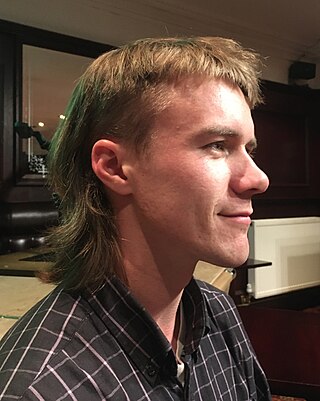
The mullet is a hairstyle in which the hair is cut shorter at the front, top and sides, but is longer at the back.

A bob cut, also known as a bob, is a short to medium length haircut, in which the hair is typically cut straight around the head at approximately jaw level, and no longer than shoulder-length, often with a fringe at the front. The standard bob cut exposes the back of the neck and keeps all of the hair well above the shoulders.

The high and tight is a military variant of the crew cut. It is a very short hairstyle, characterized by the back and sides of the head being shaved to the skin and the option for the top to be blended or faded into slightly longer hair. It is most commonly worn by men in the U.S. armed forces. It is also popular with law enforcement officers and other public safety personnel. Although "high and tight" is the primary term used in military and law enforcement, the same haircut is sometimes referred to by civilians as a "walker".

A crew cut is a type of haircut in which the upright hair on the top of the head is cut relatively short, graduated in length from the longest hair that forms a short pomp (pompadour) at the front hairline to the shortest at the back of the crown so that in side profile, so the outline of the top hair approaches the horizontal. Relative to the front view, and to varying degrees, the outline of the top hair can be arched or flattened at the short pomp front and rounded or flattened over the rest of the top to complement the front hairline, head shape, face shape and facial features. The hair on the sides and back of the head is usually tapered short, semi-short, or medium.
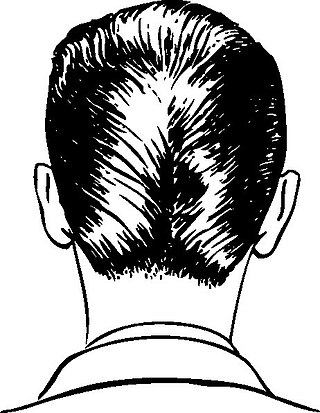
The ducktail is a men's haircut style popular during the 1950s. It is also called the duck's tail, duck's ass, duck's arse, or simply D.A. and is also described as slicked back hair. The hair is pomaded (greased), combed back around the sides, and parted centrally down the back of the head.

A bowl cut is a simple haircut where the front hair is cut with a straight fringe and the rest of the hair is left longer, the same length all the way around, or else the sides and back are cut to the same short length. It is named so because in medieval times, when it was popular in Europe, a bowl would be placed on the head and then used as a cutting guide to trim the hair.
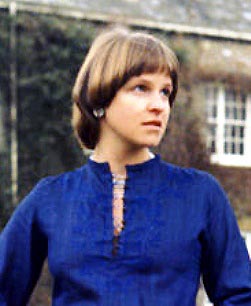
The pageboy or page boy is a hairstyle named after what was believed to have been the haircut of a late medieval page boy. It has straight hair hanging to below the ear, where it is sharply cropped and usually turns under. This clean-edged, full look usually continues smoothly across the forehead with a fringe (bangs) in the front. This style was popular from the mid-1970s through the 1980s.

The Caesar cut is a hairstyle with short, horizontally straight cut bangs. The hair is layered to around 2–5 cm all over. It is named after the Roman Emperor Tiberius Caesar Augustus, whose images frequently depict him wearing his hair in such a manner. This haircut first became fashionable among Western boys and men in the 1950s.

An induction cut, also referred to as a mighty fine, is the shortest possible hairstyle without shaving the head with a razor. The style is so named as it is traditionally the first haircut given to new male recruits during initial entry into many of the world's armed forces, but most particularly in the United States.
Layered hair is a hairstyle that gives the illusion of length and volume using long hair for the illusion of length and short hair for volume, as an easy style to manage. Hair is arranged into layers, with the top layers cut shorter than the layers beneath. This allows the tips of the top layers to blend seamlessly with layers beneath.
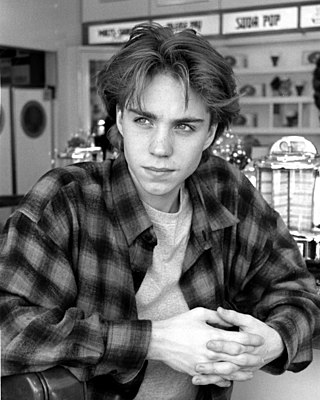
Curtained hair or curtains is a hairstyle featuring a long fringe divided in either a middle parting or a side parting, with short sides and back. Curtained hair generally applies to males, although an alternative name, the undercut, is used for both male and female haircuts following this style. Variations on this haircut have been popular in Europe, North America, and Japan throughout the 20th century and in the 21st century, peaking between 1986 and 2001.
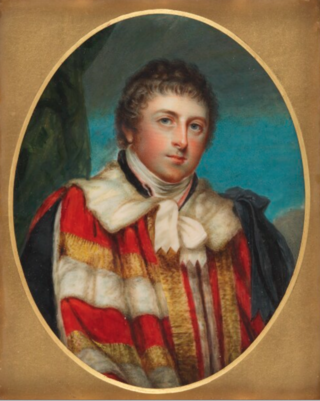
An eponymous hairstyle is a particular hairstyle that has become fashionable during a certain period of time through its association with a prominent individual.
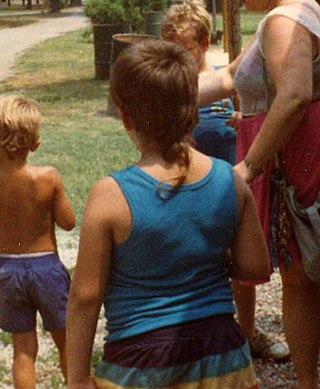
A rattail is a hair style that is characterized by a long "tail"-like element of hair growing downward from the back of the head. The rattail usually hangs naturally; however, it can be braided, treated as a dread, permed, straightened, poofed, or curled with an iron. In some instances, an individual might choose to grow several tails as opposed to a single very long tail. A rattail is characterised by hair longer than the rest of the hair surrounding it.
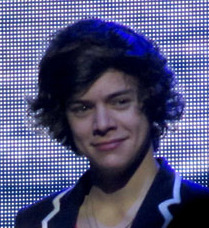
The wings haircut, also known the Mod haircut, Mop top, flippies, flow, Justin Bieber haircut, or skater hair is a popular hairstyle used in the skateboarding, surfer, mod, and preppy community. Typically long, the style can range from long and drooping below the eyes, to a shorter length. The haircut is typically wavy and, if straight, the length comes to halfway down the ears. Instead of lying on the wearer's ears, the hair flips up and comes straight out like an airplane wing, hence the name. The hairstyle was popular among men in the 1960s, 1970s, mid-late 2000s, early 2010s and 2020s.

The pompadour is a hairstyle named after Madame de Pompadour (1721–1764), a mistress of King Louis XV of France. Although there are numerous variations of the style for men, women, and children, the basic concept is having a large volume of hair swept upwards from the face and worn high over the forehead, and sometimes upswept around the sides and back as well.
The undercut is a hairstyle that was fashionable from the 1910s to the 1940s, predominantly among men, and saw a steadily growing revival in the 1980s before becoming fully fashionable again in the 2010s. Typically, the hair on the top of the head is long and is often parted on either the side or center, while the back and sides are buzzed very short. It is closely related to the curtained hair of the mid-to-late 1990s, although those with undercuts during the 2010s tended to slick back the bangs away from the face.
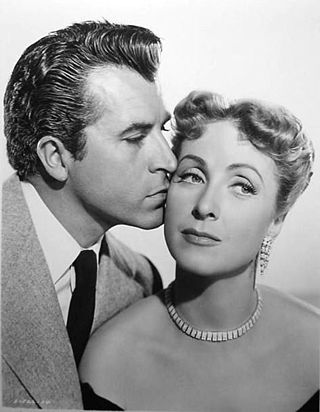
In the Western world, the 1950s were a decade known for experimentation with new styles and culture. Following World War II and the austerity years of the post-war period, the 1950s were a time of comparative prosperity, which influenced fashion and the concept of glamour. Hairstylists invented new hairstyles for wealthy patrons. Influential hairstylists of the period include Sydney Guilaroff, Alexandre of Paris and Raymond Bessone, who took French hair fashion to Hollywood, New York and London, popularising the pickle cut, the pixie cut and bouffant hairstyles.
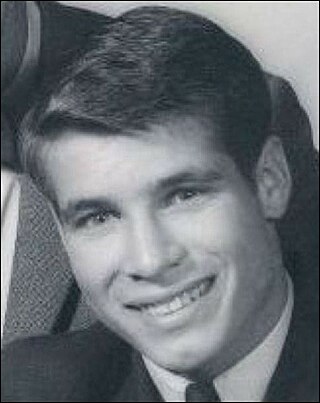
A regular haircut, in Western fashion, is a men's and boys' hairstyle that has hair long enough to comb on top, a defined or deconstructed side part, and a short, semi-short, medium, long, or extra long back and sides. The style is also known by other names including taper cut, regular taper cut, side-part and standard haircut; as well as short back and sides, business-man cut and professional cut, subject to varying national, regional, and local interpretations of the specific taper for the back and sides.
